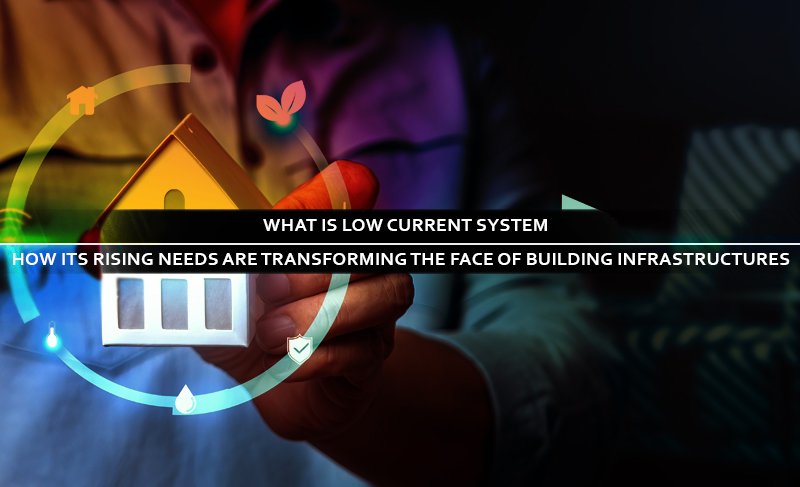
What is Low Current System: How its Rising Needs are Transforming the face of building infrastructures
The need for energy conservation has surged, and the tasks to maintain the efficiency of equipment and the building has become common. The requirement to identify energy losses has increased, shifting organizations to conserve resources and focus on enhancing business operations.
Organizations, factories, commercial buildings, and residential infrastructure utilize massive electrical equipment and systems. While it is essential for running business operations and daily tasks, companies also focus on tracking, monitoring, and managing energy losses.
This has become even more important when the need to be energy efficient and promote sustainability has become imperative owing to the exhaustion of natural energy resources.
low current devices
Such moves not only necessitate the need to have energy-efficient systems but also put forth the crucial aspect of having devices that use comparatively lesser energy and thereby conserve resources and energy efficiently.
It is a crucial component of power management systems that provides real-time information about power flow in electrical power generation systems and records and data about power systems and power-related events in organizations.
What is low current?
As the name suggests, Low Current System is a combination of electrical systems that operate and function using low current signals giving extra low voltage and covers multiple specialized techniques in the field of Electronics Systems Engineering, such as Fire Alarm Detection Systems, incidents management, etc.
low current or low voltage
The mechanism of low-current systems is quite simple. It utilizes low-current techniques with little extra voltage to conserve energy. The lower current makes lower resistance losses, leading to low energy losses, enabling the entire electricity vicinity to shift to less power, thereby enhancing productivity and high efficiency.
With the rise in the need for electricity conservation and energy efficiency, the implementation of low current infrastructure has become an integral part of the infrastructure, especially the ones which entail new building projects for residential, hotel, commercial, or mixed-use constructions, and driving efficiency.
Low Current Systems
Low-current systems utilize a combination of several critical elements that helps in maintaining a less current system of energy dissipation.
Known as an Extra-Low Voltage system, it is a significant electrical engineering discipline that operates and functions using low current signals and extra-low voltage.
With countries shifting to Net Zero emissions and pre-defined targets for reducing GHG emissions, the implementation of the Low current system is already on the rise and will benefit the industries across the sectors massively.
Recent research suggests that the global power management systems market will reach USD 15 Billion by 2025.
It becomes more significant when factors such as rising electric power consumption in IT and telecommunications, automotive, oil and gas, aerospace and defense, and agriculture are at their peak.
Another research suggests that the rising adoption of electric vehicles and urbanization is expected to surge the electricity demand by 57% by 2050, and with such a surge, the typical requirement of low current systems will rise with rapid pace.
A typical Low current system consists of several elements, including building management systems, Fire detection and fire alarms, GPS master clocks, CCTV, Public address systems, and access control devices.
The primary purpose of a low current system includes electricity conservation, which directly or indirectly contributes to a more significant part of electricity systems and helps promote sustainability and efficiency by conserving resources.
We, at Leader Group specialize in providing you with the consultation and proposal of already installed systems with a personal consultation in customized formats as per your needs and requirements.
High current systems
Moreover, it determines your current condition, evaluates high-risk spots, and proposes the optimal solution regarding future development and modernization of your business processes.
Our team of experts has always been to provide reliable products and dependable customer service. Furthermore, we have a team of dedicated and highly skilled engineers who have successfully launched low-current services.
Conclusion
With the surge in demand for urbanization, infrastructure, commercial and residential both, it is noticeable to see the rise in electricity consumption which has put the already deteriorating and exhausting natural resources of energy.
This has put enormous pressure on energy resources and necessitated a low current system in infrastructure, both in terms of in-built and outbound facilities.
Leader Group’s high-performance, low-current systems allow organizations to remain abreast with complete control of the premises and are engineered to provide end-to-end service from the most minor and central back-end control systems.





